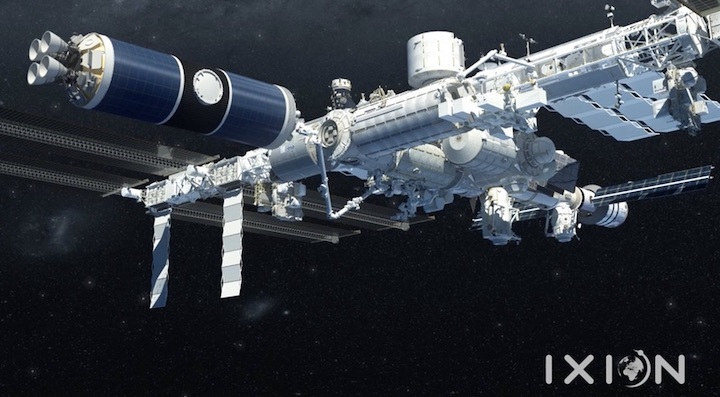24.06.2019

WASHINGTON — NASA issued a call for proposals for commercial modules that could be added to the International Space Station, although one industry executive warns that such facilities may not be as lucrative as NASA believes.
NASA issued a call for proposals June 21 for “commercial destination development in low Earth orbit using the International Space Station.” The solicitation is an appendix to the agency’s Next Space Technologies for Exploration Partnerships (NextSTEP), a program that uses public-private partnerships to develop key exploration-related technologies.
Under the solicitation, NASA will eventually make available a docking port on the Node 2, or Harmony, module on the ISS for use by a commercial module. The language in the solicitation leaves open the possibility of establishing a “commercial segment” of the station there, consisting of multiple commercially developed elements.
NASA will initially award one or more studies for concept and business development, and may also fund early design work on those commercial modules. Those awards will lead “to subsequent task orders and an eventual decision point for prioritization of use of the ISS port,” NASA said in the solicitation.
The agency said in its solicitation it will reach that “decision point” regarding access to the Harmony docking port 12 to 18 months after initial awards. The selected company would then work to get its module or modules installed on the station no later than September 2024.
The solicitation is part of a broader strategy to enable commercialization of low Earth orbitannounced by NASA June 7, which also includes pricing for commercial use of the station and enabling visits by private astronauts. NASA will also release a solicitation later this summer, as another NextSTEP appendix, to support development of commercial free-flyer destinations in LEO separate from the ISS.
NASA didn’t disclose the number of awards it plans to make or their size. The agency said in the solicitation that it intends to spend $561 million across both NextSTEP appendices to support development of commercial ISS modules and free-flyers.
That overall strategy is intended to gradually transition human activities in LEO from the ISS to commercial facilities. “NASA seeks to enable multiple privately owned and operated destinations in LEO that are commercially viable in the long term, providing services to the Government as one of many customers,” the solicitation states.
That was the message the agency also gave at a June 21 panel discussion by the Potomac Institute for Policy Studies here. “All of those activities are really focused on helping industry build a business case,” said Doug Comstock, the commercial LEO liaison in NASA’s human exploration and operations mission directorate. “We anticipate that industry will be able to provide the R&D services and technology demonstration services in LEO that the agency needs at a much more efficient cost than NASA currently does with the ISS.”
The long-awaited solicitation for the ISS port was welcomed by companies that had for the last few years awaited such a move by NASA. They cautioned, though, that NASA shouldn’t expect such facilities to immediately be lucrative.
“I worry that now NASA believes in commercial so much they think it’s going to be billions of dollars in revenue in LEO,” said Jeffrey Manber, chief executive of NanoRacks, at the panel. “News flash: it’s not.”
Manber said that the international nature of the ISS, with facilities from different countries, will make it difficult for a single commercial entity to generate a lot of revenue. “It’s going to be difficult to extract optimal revenue, so we have to be realistic,” he cautioned.
Some NASA officials have suggested that commercial users of the ISS could defray the operating costs of the station, thus freeing up funding for use elsewhere, such as the Artemis program to return humans to the moon. “We do anticipate that the revenue that’s generated from these activities will reduce our cost to operate the International Space Station,” said Jeff DeWit, NASA’s chief financial officer, at a June 7 event in New York to unveil NASA’s LEO commercialization strategy. “That revenue can shift and help us in our mission to get to moon.”
However, NASA has acknowledged that, even with its price list for cargo transportation and other services, it is still subsidizing commercial activities on the station. Those prices “do not reflect full recovery of NASA’s costs” and may be adjusted, NASA stated.
Manber, though, noted that the support the agency is showing for commercial activities on the station is a far cry from the early days of his company. “When we started NanoRacks 10 years ago, we were the first company to own and market our own stuff on the space station,” he recalled. “There were fierce battles in 2009 as to how a private company could be on a taxpayer-funded platform, charge our own prices, keep the revenue.”
NASA has become far more open to commercial activities since then, he said. “We have matured and NASA has matured.”
Quelle: SN
